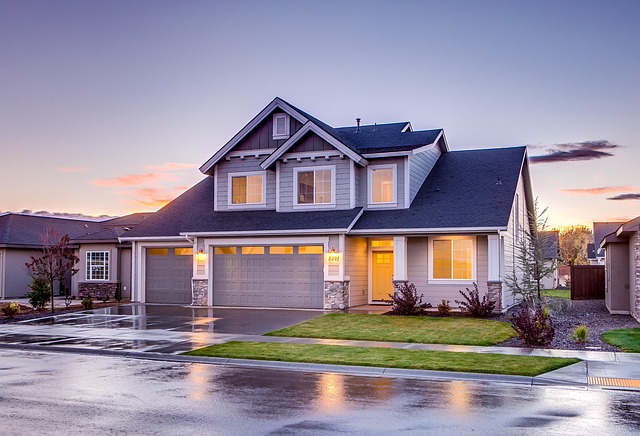Rural property owners face unique security challenges that traditional alarms can't always meet. Outdoor alarms, especially wireless and solar-powered models, offer tailored solutions with motion-activated alerts and weatherproof designs. DIY installation kits gain popularity due to their flexibility and ease of setup, featuring strategic sensor placement for expansive rural properties. Key features include wireless security, solar power, motion-activated sensors, weatherproofing, long-range coverage, and perimeter alarms. Regular maintenance ensures optimal performance while providing peace of mind for remote living environments.
In today’s digital era, securing rural properties presents unique challenges. DIY installation kits for outdoor alarm systems offer a game-changing solution for folks seeking robust security in remote areas. This comprehensive guide explores the essential aspects of enhancing your rural property’s defenses, from understanding specific security needs to selecting ideal wireless outdoor alarms—including solar-powered and motion-activated models—and mastering installation tips for long-lasting protection against unwanted intrusions.
- Understanding Rural Property Security Needs
- Types of DIY Outdoor Alarm Systems: A Comprehensive Overview
- Key Features to Consider for Your Rural Property
- Installation and Maintenance Tips for Long-Lasting Security
Understanding Rural Property Security Needs

In rural areas, property security needs differ significantly from urban settings due to vast open spaces and potential isolation. Homeowners often face challenges such as extensive perimeters, difficult terrain, and a higher risk of unauthorized access. Traditional alarm systems might not suffice, leading many to seek robust, specialized solutions. Outdoor alarms for rural properties, particularly wireless outdoor security alarms and solar-powered variants, have gained popularity for their versatility and reliability.
These innovative devices offer features like motion-activated alerts tailored for rural areas, ensuring sensitive detection without false triggers common in urban environments. Additionally, weatherproof designs protect against harsh elements, a critical factor for long-range outdoor alarm systems intended to cover extensive rural property lines. Such systems not only deter potential intruders but also provide peace of mind, crucial for folks who live far from immediate neighbors or emergency services.
Types of DIY Outdoor Alarm Systems: A Comprehensive Overview

DIY installation kits for outdoor alarm systems have become increasingly popular among rural property owners looking to enhance their home security. These kits offer a range of options tailored to the unique challenges faced in remote areas, where traditional security measures might be less effective. Among them, wireless outdoor security alarms stand out for their flexibility and ease of setup, allowing homeowners to place sensors at strategic points around their properties without the hassle of running wires. Solar-powered models are also gaining traction due to their eco-friendliness and ability to operate independently from power grids.
For enhanced protection, many DIY kits incorporate motion-activated alarms designed specifically for rural areas, where wildlife and potential intruders can be hard to distinguish. These systems are built to withstand harsh weather conditions, ensuring they remain reliable year-round. Long-range outdoor alarm systems offer an additional layer of security by covering a broader area, while perimeter alarms are ideal for monitoring the boundaries of rural homes, providing early warning of any unauthorized entry.
Key Features to Consider for Your Rural Property

When choosing an outdoor alarm system for your rural property, there are several key features to consider that go beyond basic functionality. Wireless outdoor security alarms and solar-powered models are increasingly popular due to their ease of installation and minimal environmental impact. These systems can be equipped with motion-activated sensors, ideal for detecting intruders in open spaces characteristic of rural areas. Moreover, ensuring the alarm is weatherproof is crucial, as rural locations often experience harsh weather conditions.
For comprehensive coverage, look into long-range outdoor alarm systems that can protect expansive rural properties. Perimeter alarms are another valuable addition, alerting you to any breaches in your property’s boundaries. Features like remote monitoring and integration with smart home systems further enhance security. Prioritizing these aspects will help you select a DIY installation kit tailored to the specific needs of your rural property.
Installation and Maintenance Tips for Long-Lasting Security

When setting up a DIY outdoor alarm system for your rural property, proper installation and regular maintenance are key to ensuring its longevity and effectiveness in safeguarding your home. One crucial tip is to strategically place the sensors, focusing on areas most vulnerable to unauthorized entry, such as perimeters and entry points. Wireless outdoor security alarms and solar-powered models offer flexibility and ease of installation, making them ideal for do-it-yourselfers. These systems often include motion-activated sensors that trigger alerts when detecting movement, which is perfect for rural areas with minimal human traffic.
Regular maintenance involves testing the system frequently to ensure all components function optimally. Inspecting the wiring, checking battery levels in solar-powered alarms, and verifying sensor sensitivity are essential tasks. Additionally, weatherproofing your outdoor alarms is vital to protect them from the elements, especially if you live in an area with extreme temperatures or harsh rain. Long-range outdoor alarm systems with durable designs can provide comprehensive security for rural properties, giving peace of mind and enhanced safety.
DIY installation kits for outdoor rural alarm systems offer a cost-effective and flexible solution for enhancing property security. By understanding the specific needs of rural properties and considering features like wireless connectivity, solar power, motion activation, and weatherproof design, homeowners can effectively protect their land from potential threats. Following best practices during installation and maintenance ensures these systems provide long-lasting security, giving rural folks peace of mind and a sense of safety in their own backyards.
